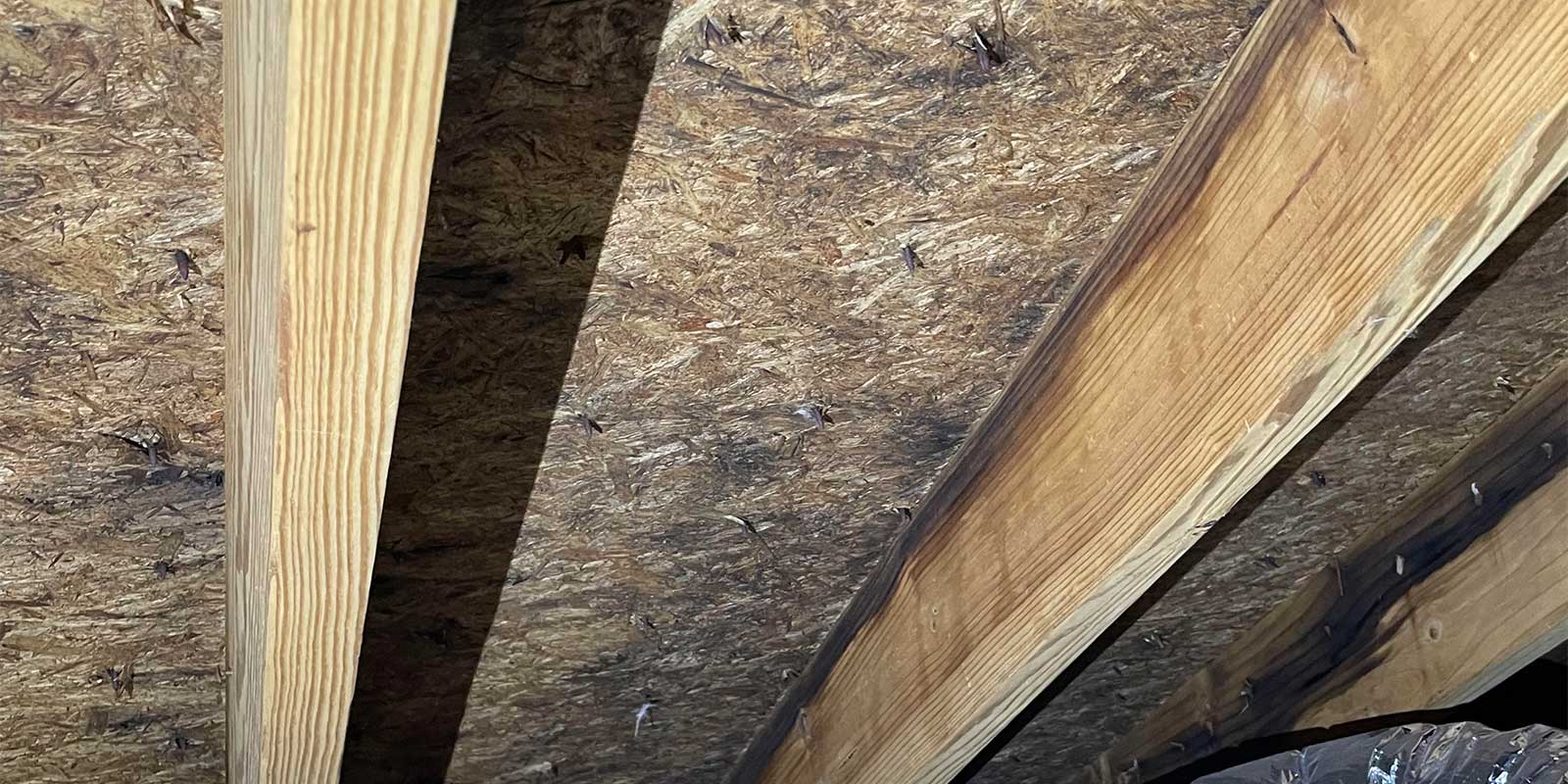Understanding the Importance of Home Ventilation
Ventilation is a key factor in the health of a home and the longevity of its roof. This critical component affects a majority of homeowners, no matter if you own a new or old home. Approximately 60 to 70% of houses are not ventilated properly — but with L.H. Krueger at your side, you can take steps to prevent poor ventilation from reducing the lifespan of your roof.
What is Ventilation?
Ventilation begins in a spot that can be critical to the lifespan of your roof: the attic. When a house is cooled or heated, the moisture and heat rise into the attic. Once this combination reaches the attic, it needs to keep going — if it doesn’t, it remains trapped inside, causing ventilation problems for your home and roof. Improper ventilation can produce mold, delaminate roof sheathing, create excess heat, and increase your monthly energy bill.
Ventilation, however, is not an isolated aspect of your home. It’s a balanced system that, when unbalanced, can result in a shortened lifespan for your roof. Influenced by a careful composition of insulation, home construction, vent types, and placement, maintaining the right amount of ventilation can be tricky. The failure to remove moisture and heat from the home can warp your roof while releasing too much heat can raise your energy costs as you scramble to make it up.
Contributing Ventilation Factors
One of the largest factors in ventilation is the construction of your home. From blueprint to construction, there are a number of places where ventilation can go wrong. When a home is built, it begins with a carpentry crew, who will place ridge vents according to the home’s blueprint. Then comes the roofing contractor, shortly followed by an insulation company. As each crew tackles their respective tasks, they may follow precedents set by the previous contractors, neglecting to consider ventilation as they build. Even building inspectors can fail to account for appropriate ventilation, often checking that a home merely has ventilation rather than its effectiveness. With so many hats in the ring, ventilation is often an afterthought.
However, certain layouts and roof types can contribute to poor ventilation more than others. Cathedral ceilings, a common staple in modern homes, often experience difficulties with ventilation — especially in houses built in the late 20th century. These ceilings eliminate your typical attic space, as the underside of your roof functions as the top of your living space. With packed insulation and limited room to vent air from the gutter line to the ridge, the air in the home has about an inch of space to move through and struggles to escape.
Hip roofs also struggle to provide adequate ventilation for a home. Traditionally, most venting occurs at the top point of the roof: the highest peak. Because hip roofs have reduced ridge areas and condensed peaks, venting space is limited. The framing of a home may also obstruct airflow. As a result, most homes with hip roofs require old-fashioned roof vents to make up for a lack of ridge areas. When these roof vents are not present, poor ventilation is all too common.
Spotting Poor Ventilation Signs
By now, you may be wondering if your home has the proper ventilation it requires. So, how can you tell if your home is poorly ventilated? Luckily, there are a few exterior signs you can keep an eye out for. The first is easy to spot: ice damming. An excess of icicles lining your gutters or roof can signify the refreezing of snow and ice melted by warm spots on your roof. But you don’t have to wait for winter to identify potential warning signs: as colder weather rolls in, frost can be a useful tool for spotting ventilation problems early in the season. When a thin layer of frost blankets your roof, you can easily see trouble spots because these areas will melt away while the rest of the frost remains intact.
The next sign is a little harder to spot, but indicative of poor ventilation nonetheless. Unlike ice damming or frost, you can spot this red flag any time of the year! Roofs with poor ventilation will often warp, creating a texture of lumps and bumps visible to the naked eye. Improper ventilation will cause the plywood beneath your roof to delaminate and curl. Excessive heat stored in the house can also melt the glue of the roof sheathing, creating a slight buckled appearance. If you’re looking at your roof and notice hips and dips, it’s the first sign that something may be awry.
Lastly, the temperature and humidity of your home can provide clues about your ventilation. A warm house means that air may be struggling to find an exit. As a general rule of thumb, if your attic is more than ten degrees hotter than the temperature outside, it can be a sign of poor ventilation — and while you’re up there, take a quick look around for that telltale mold.
Being Proactive Against Poor Ventilation,
Unfortunately, ventilation issues can be hard to prevent. But that doesn’t mean it’s impossible! If you notice any of these warning signs, give us a call. At L.H. Krueger, we know that a roof isn’t just shingles — it’s a system. That’s why we partner with local insulation companies, the first line of defense against poor ventilation, to create a system that works for you and your roof. Using proper calculations and inspection, we provide a quality job that doesn’t cut corners, pays attention to ventilation, and offers solutions unique to your home.
Say Goodbye to Bad Ventilation with L.H. Krueger
If you’ve noticed any of these warning signs or had ice dams last winter, we can help. Avoid ice damming this winter and take the proper steps towards good ventilation. Request your free estimate from L.H. Krueger today!




